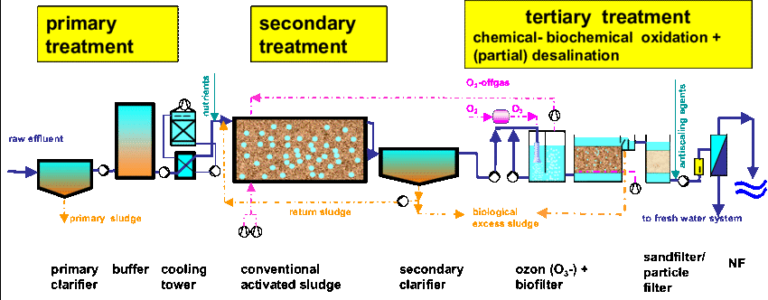
Introduction
Chemical wastewater treatment methods play a crucial role in ensuring environmental sustainability and protecting public health. This article will delve into the various techniques and processes used to effectively treat chemical wastewater, providing an in-depth analysis of the key concepts, historical background, and current trends within the field.
Historical Background
The history of chemical wastewater treatment methods dates back to ancient civilizations, where basic techniques such as sedimentation and filtration were utilized. Over time, advancements in scientific understanding and technological innovation have led to more sophisticated treatment methods. Significant milestones, such as the development of coagulation/flocculation processes and the advent of biological treatment methods, have greatly improved the efficiency of chemical wastewater treatment.
Key Concepts and Definitions
To fully comprehend chemical wastewater treatment, it is essential to define key terms and concepts. Chemical wastewater refers to water contaminated with various substances that pose potential risks to the environment and human health. Understanding the fundamental principles and processes involved in treating chemical wastewater, such as coagulation, oxidation, and precipitation, is crucial for implementing effective treatment methods. Additionally, recognizing the different types of chemicals commonly found in wastewater and their potential impact on the environment is vital for developing suitable treatment strategies.
Main Discussion Points
Physical Methods of Chemical Wastewater Treatment
Physical methods, including sedimentation, filtration, and adsorption, are commonly employed in chemical wastewater treatment. Sedimentation involves the separation of solid particles from wastewater through gravitational settling. Filtration utilizes porous materials to trap impurities, while adsorption involves the attachment of contaminants to solid surfaces. These physical methods have proven effective in removing a wide range of chemicals, and real-world applications and case studies showcase their success.
Chemical Methods of Chemical Wastewater Treatment
Chemical methods, such as coagulation/flocculation, oxidation/reduction, and precipitation, are widely used in the treatment of chemical wastewater. Coagulation/flocculation involves adding chemicals that cause particles to clump together for easier removal. Oxidation/reduction reactions break down harmful compounds, while precipitation involves the formation of insoluble compounds that precipitate out of the wastewater. Understanding the advantages, limitations, and applicability of each chemical method is crucial for successful implementation.

Biological Methods of Chemical Wastewater Treatment
Biological methods, including the activated sludge process and constructed wetlands, play a significant role in the treatment of chemical wastewater. The activated sludge process utilizes microorganisms to degrade organic compounds, while constructed wetlands mimic natural ecosystems to remove pollutants. Biological methods are particularly effective in treating specific types of chemicals and offer benefits such as cost-effectiveness and environmental sustainability.
Case Studies or Examples
Real-world examples and case studies further highlight the effectiveness of chemical wastewater treatment methods. These examples showcase the challenges faced in each case and how they were overcome through innovative treatment strategies. The outcomes and impacts of these treatment methods on the environment and public health serve as evidence of their importance in ensuring a sustainable future.
Current Trends or Developments
Continuous research and development within the field of chemical wastewater treatment have led to emerging trends and innovative approaches. Recent advancements, such as the utilization of advanced oxidation processes and membrane technologies, highlight the potential for improved treatment efficiency. These developments have the potential to revolutionize the field and have a significant impact on the future of chemical wastewater treatment.

Challenges or Controversies
Despite the advancements, challenges and controversies persist in chemical wastewater treatment methods. Differing viewpoints and debates surround the effectiveness of certain treatment methods, particularly in dealing with emerging contaminants. Addressing these challenges requires exploring potential solutions and alternative approaches, such as integrating multiple treatment methods or implementing stricter regulations.
Future Outlook
Looking ahead, chemical wastewater treatment methods are poised for remarkable advancements. Continued research and collaboration will lead to improved treatment efficiency and effectiveness. Advancements in technology, such as the utilization of nanotechnology and artificial intelligence, hold promising potential. Ongoing dedication to addressing emerging challenges and ensuring sustainable wastewater treatment practices is essential for the future of chemical wastewater treatment.

Conclusion
In conclusion, chemical wastewater treatment methods play a pivotal role in protecting the environment and public health. Through a historical overview, key concepts, main discussion points, real-world examples, and current trends, this article has provided an expansive understanding of the importance and effectiveness of chemical wastewater treatment. Moving forward, ongoing research and collaboration are vital to ensure a sustainable future for chemical wastewater treatment.




